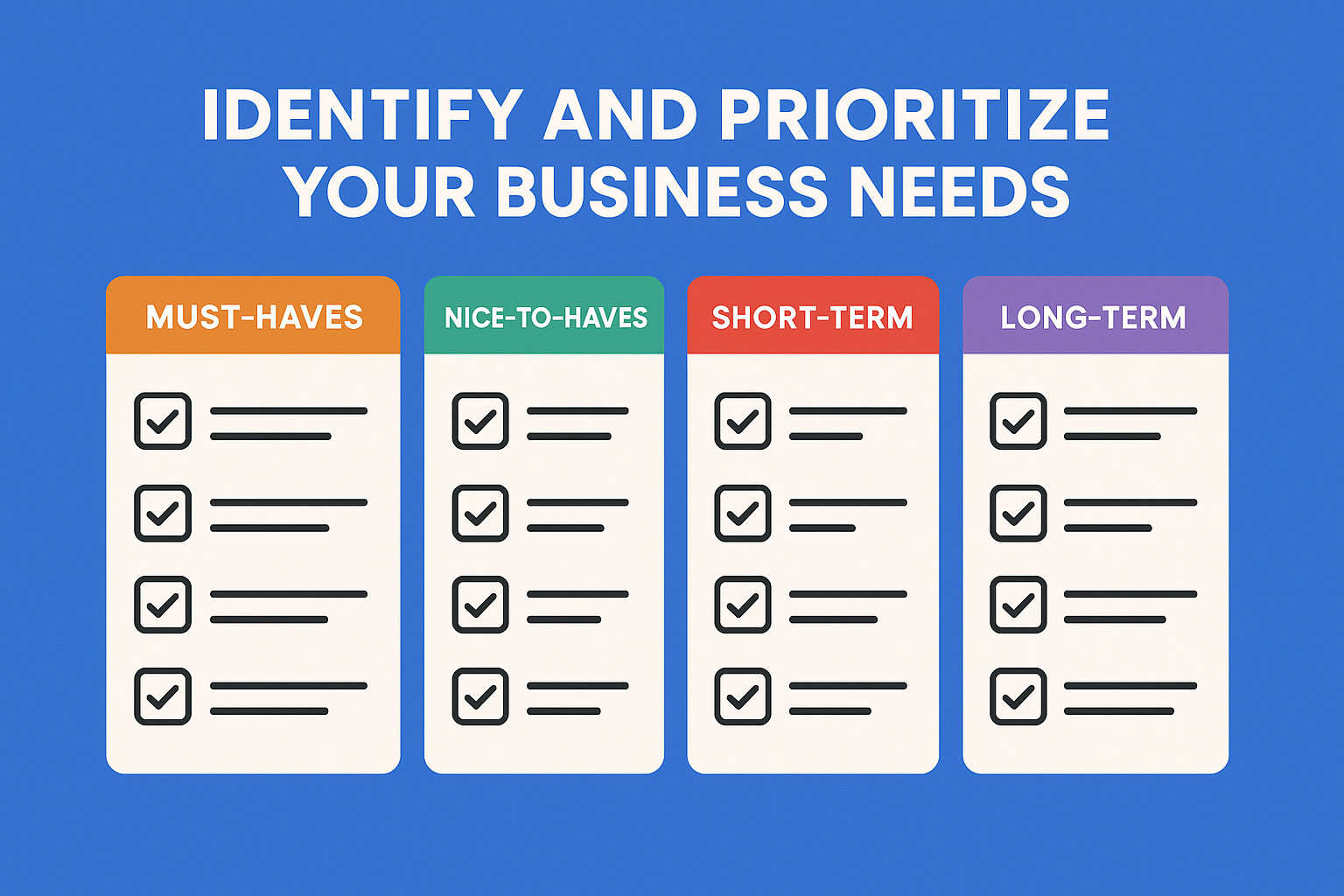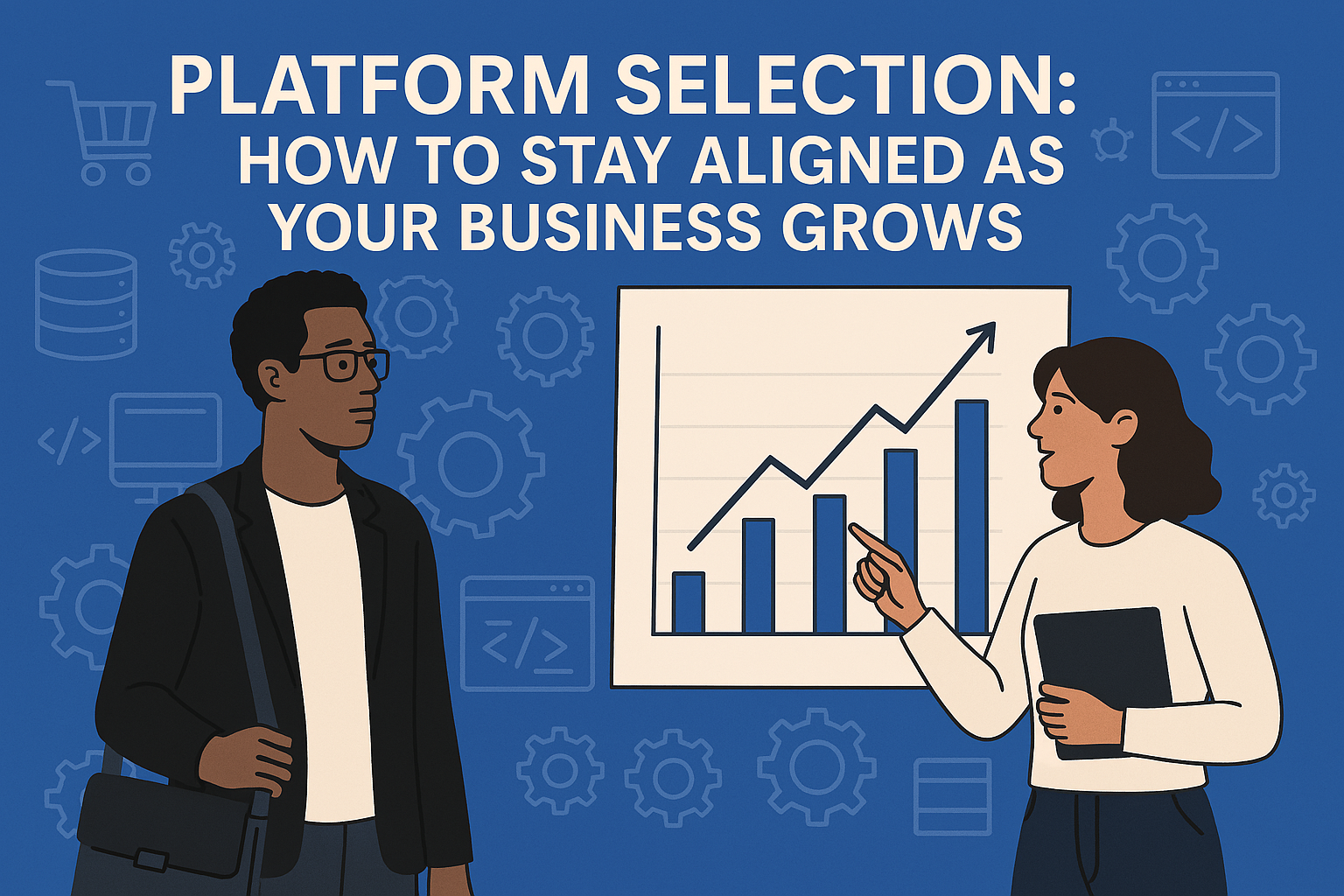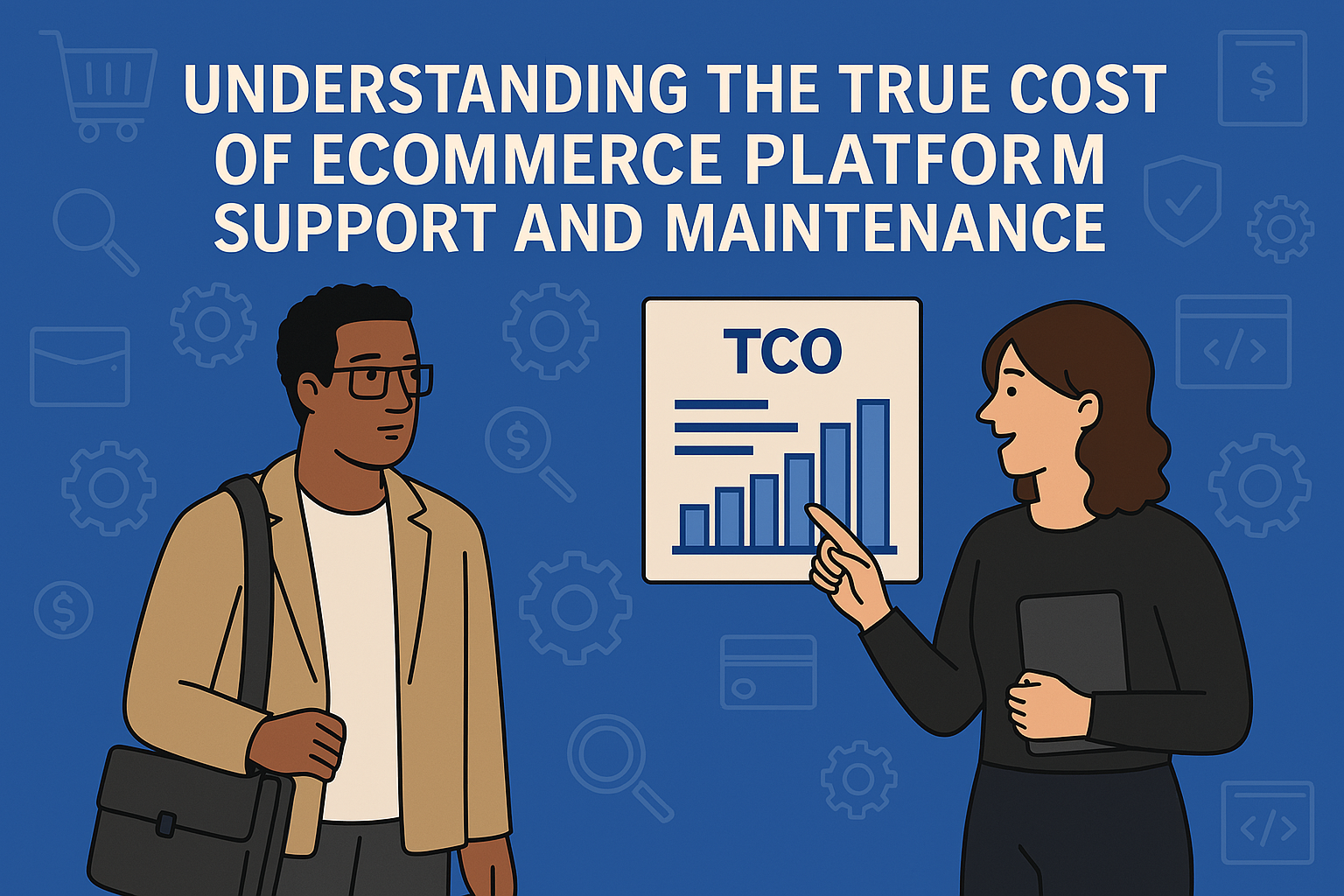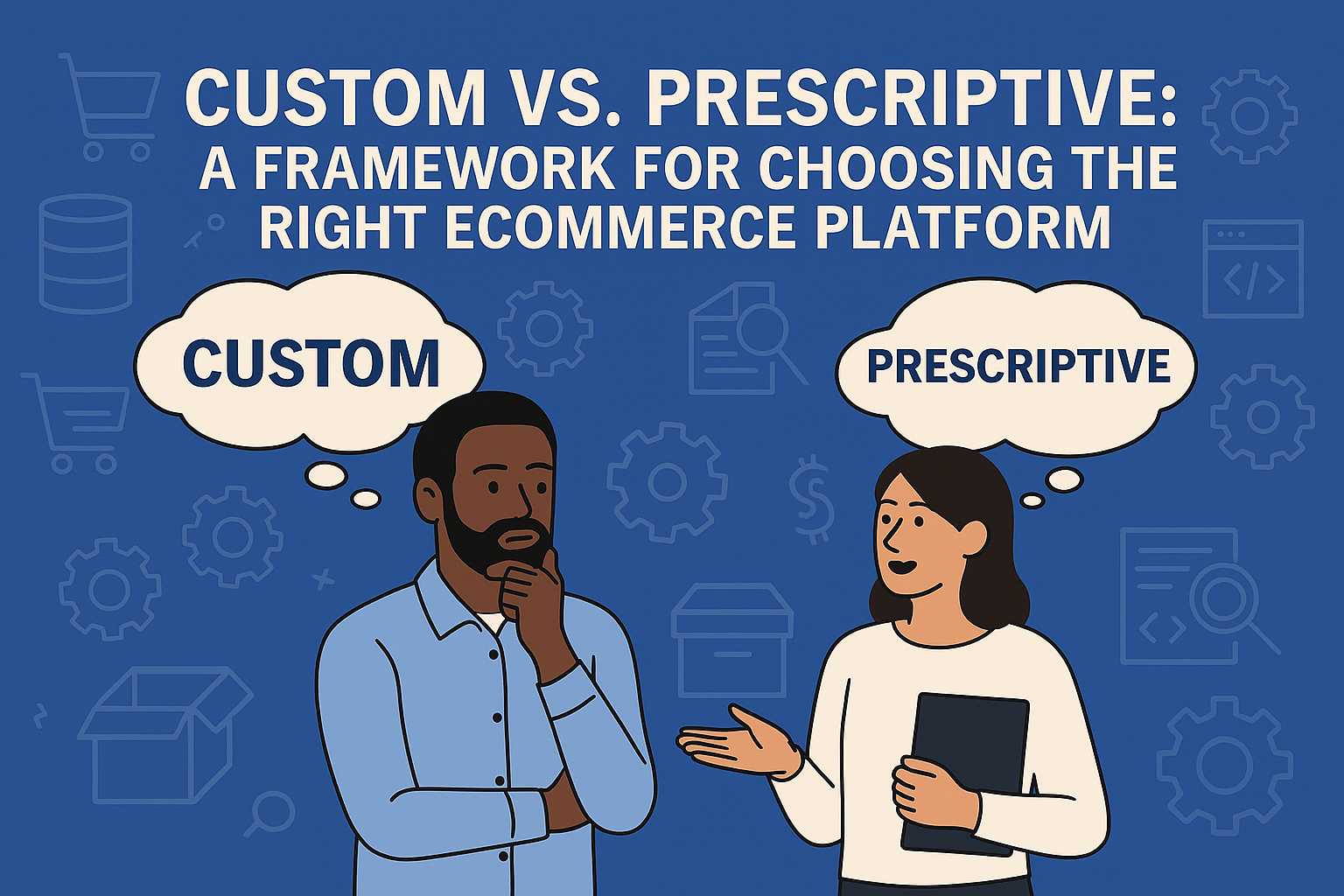Platform Selection: How to Stay Aligned as Your Business Grows
Following eCommerce platform selection, evaluate ongoing platform alignment, lock-in, and potential technical debt as your eCommerce business evolves.
3 min read
 Tim Bucciarelli
:
May 13, 2025
Tim Bucciarelli
:
May 13, 2025

Table of Contents
Replatforming your online store is a significant decision. For many small business eCommerce owners, it’s not just about choosing new software but rethinking how your business operates online. Whether your current platform is falling short on functionality, scalability, or integration, a structured approach is essential to avoid unexpected roadblocks.
The first step is to clarify why you are replatforming. Too often, small businesses leap into a platform search without fully defining what success looks like.
Break down your needs into these categories:
By organizing requirements this way, you avoid falling for shiny features that don’t actually solve your core business problems. For deeper insights into eCommerce platform selection, explore our guide that details how to evaluate platforms for long-term growth.
With your checklist in hand, evaluate each potential platform across key dimensions:
A simple spreadsheet can help you score each platform against these factors, making it easier to compare options side by side. For a detailed comparison of leading platforms, check out our in-depth comparison of Commercetools vs. Adobe Commerce.
If you are engaging third-party developers or an eCommerce UX agency, their proposal is as important as the platform itself. Look for:
Equally important is the chemistry and responsiveness of the team. Successful replatforming is a partnership that requires good communication and trust. If you’re evaluating agencies, our article Choosing the Right Magento Agency provides essential criteria to consider.
Once you've evaluated your options, it's time to make two critical decisions:
For examples of successful replatforming projects, visit our eCommerce support services page to see how we guide businesses through smooth transitions.
With your platform and team in place, start planning the migration process:
It is critical to communicate openly with your team and build flexibility into your timeline. Even the best-planned projects can hit unexpected hurdles. For more guidance on ensuring a smooth transition, our Magento migration guide covers essential best practices.
Key advice: The best eCommerce replatforming projects follow a structured process grounded in your business’s unique needs. A thorough checklist approach helps you focus your analysis, avoid distractions, and keep your replatforming journey on track. Working with an experienced eCommerce UX agency can make the process smoother, ensuring your next platform not only solves today’s problems but sets you up for future growth.

Following eCommerce platform selection, evaluate ongoing platform alignment, lock-in, and potential technical debt as your eCommerce business evolves.

eCommerce platform costs go beyond licensing and launch. Support, maintenance, and long-term scalability impact total cost of ownership.

eCommerce platform selection requires understanding your true needs. How do SaaS, PaaS, and Self-Hosted platforms align with growth, budget, and goals?